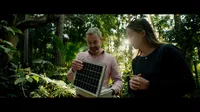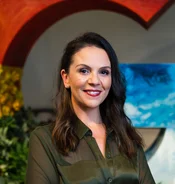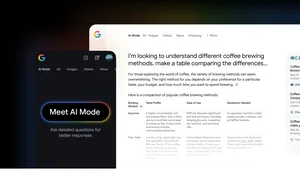How AI is shaping Australia's digital future

AI is often talked about in the context of the future. But in Australia, Google AI is already having a transformational impact - helping us tackle some of our most pressing challenges right now.
From environmental conservation to healthcare innovation, Australians are using AI in unique and novel ways to address problems that were previously out of reach – both here and around the world.
We’re proud to be supporting Australia’s ambitions in AI through our $1 billion Digital Future Initiative – an investment in technology, research and partnerships. In the first two years of this ambitious project, we’ve launched half a dozen AI projects that aim to address major challenges, partnering with leading Australian organisations like CSIRO.
Here are some of the ways Google AI is helping build a stronger digital future for Australia:
Mitigating the impacts of climate change and protecting our natural wonders
One of the most pressing challenges facing Australia is the health of our unique ecosystems – from the Great Barrier Reef in our north, to the giant kelp forests off the coast of Tasmania. These fragile environments are at risk from climate change and invasive species – with only 5% of Tasmania’s giant kelp forests remaining today. This is alarming, because like forests on land, these kelp forests are crucial for countless species that depend on it. When they disappear, it affects the entire ocean.
But AI is helping. Google Australia and Google Research have teamed up with CSIRO, Institute for Marine and Antarctic Studies (IMAS), The Nature Conservancy, Great Southern Reef Foundation and Kelp Forest Alliance to preserve giant kelp forests in Tasmania. Using Google AI tools, the team is mapping giant kelp populations for the first time, and analysing the surviving giant kelp to understand what makes some of it heat resistant to restore the giant forests.
We’ve also been developing AI solutions with CSIRO to detect invasive crown-of-thorn-starfish in the Great Barrier Reef and to promote carbon sequestration, with DFAT.
And we’re collaborating with QUT and the Australian Acoustics Observatory (A2O) to develop A2O Search, a search engine for nature sounds, that will equip researchers with vital insights on the health of an ecosystem. Traditionally, researchers spent hours manually identifying sounds, but A2O Search helps them quickly locate specific animal recordings within a vast database. This technology empowers ecologists to study more species, ask broader questions, and uncover new insights about mating, nesting, and population dynamics. The open-source tool aims to accelerate conservation efforts and protect Australia's biodiversity in the face of bushfires, deforestation, and invasive species.
After being harvested, Giant Kelp enters CSIRO and IMAS labs in Hobart where it is studied and grown to ultimately restore the forests off the coast of Tasmania. Microscope Image credit: Eileen Lee.
An AI model detecting crown-of-thorn-starfish
An aerial map of the reef showing where crown-of-thorns-starfish have been detected
More than 750 million people live within 50km of a kelp forest - and many don’t even know they are there. Image credit: Kelp Forest Alliance collection and GRID-Arendal.
Reimagining healthcare technology and research
One of the most exciting aspects of AI is the potential it holds not just to improve existing technology, but to totally reimagine what’s possible. That holds immense promise in the fields of healthcare technology.
There are 1.5 billion people globally who have some form of hearing loss. In partnership with Cochlear, Macquarie University Hearing, National Acoustic Laboratories (NAL), NextSense and The Shepherd Centre, we're exploring AI and machine learning solutions to pave the way for more personalised hearing healthcare that meets the needs of the individual listener. The first project seeks to develop models to assist people using devices in complex listening environments, such as restaurants.
Together, we are working on new ways for AI models to help separate and prioritise sounds and filter out background noise, to ultimately make it easier for people with hearing loss to hear and understand conversations.
Prof Greg Leigh AO (NextSense), Dr Simon Carlile (Google Research), Prof David McAlpine (Macquarie University), Dr Zachary Smith (Cochlear), Prof Catherine McMahon (Macquarie University), Dr Aleisha Davis (Shepherd Centre), Dr Malcolm Slaney (Google Research), Sam Sepah (Google Research), Dr Brent Edwards (National Acoustic Laboratories)

Helping people grow their digital and AI skills
A stronger digital future is a future where every Australian has access to technology and the skills to use it, with vital services widely available online. Australia has a rich history of innovation, it's the birthplace of WiFi and our very own Google Maps. There's an immense opportunity for Australia to continue developing innovations that help people around the world - and it’s crucial the next generation of entrepreneurs have the skills they need to make breakthroughs.
To support this, Google has launched AI Essentials - a self-paced course designed to help people across roles and industries learn AI skills, without needing prior experience. This is a way of helping Australians build the skills they need to thrive in the future, and potentially benefit from 40% growth expected in AI and machine learning specialists jobs in AI.
This important skilling initiative builds on our broader investments that are making sure Australians have access to technology and AI, which support the ability for people and businesses across the country to use and benefit from AI. This includes major infrastructure investments, the establishment of an AI-focused Google Research hub in Sydney and our investments in undersea cables powering digital connectivity across the region.
This is just a glimpse into the ways AI is playing, and can continue to play a critical role in helping build Australia’s digital future. Far from just a promise of something to come, AI is having major benefits for people and businesses across Australia now. It’s providing new hope in tackling our most difficult challenges, and we look forward to continuing to partner with researchers, scientists and leading organisations across the country to address these issues and build a stronger digital future for all Australians, together.


